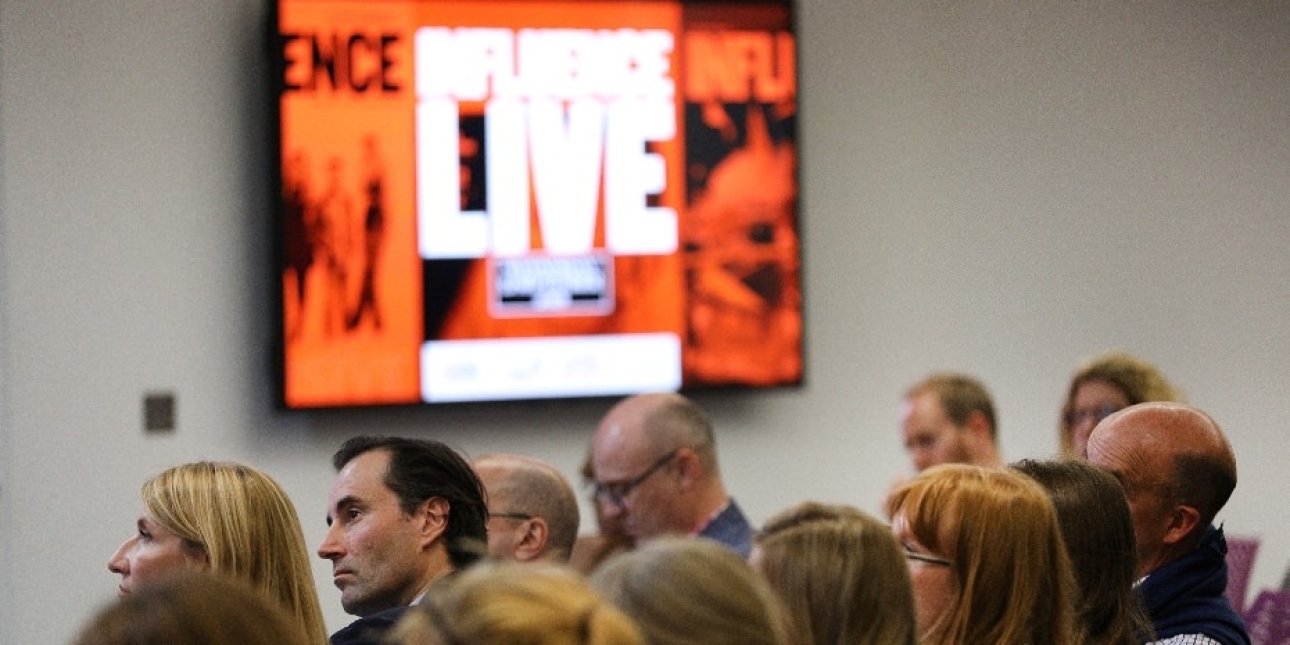PUBLIC RELATIONS
Tuesday 23rd October 2018
The Secret Behind a Winning Video Strategy - A Video Masterclass with Curveball at Influence Live 2
The idea of standing up in front of a savvy gathering of PR professionals and telling them how to communicate seemed at the very least a daunting prospect, if not entirely stupid.
So that’s exactly what we didn’t do at this year’s Influence Live 2.
Because PRs already get the importance and power of communication. That’s what they’re good at. They know communicating through video is a powerful tool and increasing in popularity, literally by the second. They know it’s richer and more enticing than other media, offering sound, visuals and movement all together.
In spite of knowing how powerful video is, PRs often ask us what makes a winning video strategy. The answer to which, in a word, is psychology. There is a second thing that makes for a winning video strategy, but we’ll get to that later.
That’s why Oliver Lawer, one of Curveball’s co-founders, kicked off the Influence masterclass by revealing what understanding the audience’s psychology means in practice.
“The key principle that should underpin any good strategy, and the video itself, is that we humans make emotional decisions first and then justify them with logic and reason afterwards.”
Why?
Because the emotional part of the brain is older in evolutionary terms and far quicker to respond to stimuli than the younger rational brain, especially if a message (i.e. a signal in the environment) relates to food, lovers, family, shelter or danger (fighting or fleeing).
So, when planning your video strategy, it’s important to pinpoint the emotions you’ll be dealing with at the heart of your message and consider how they may evolve throughout your campaign, as well as how they may evolve within a video itself.
People’s level of interest, and their mood, can change in an instant, so starting off with the mantra, "emotions followed by logic” will put you in good stead.
Are you trying to encourage a strong reaction or make people pause for thought, and when? You might be aiming to encourage both, but at different points in your video and overall strategy. At the beginning of a campaign, there may be a focus on inspiring curiosity whereas, towards the end, you might be more focussed on encouraging reflection and satisfaction or a desire to take action.
Understanding the principle of "emotion followed by logic" will make a difference to the videos you make and whether people respond. Saying this is all well and good, but as the adage goes, showing is better than telling. So, Olly played two examples of that principle in action, one animation and one film.
In the CEPI animation, which has racked up more than 3 million views across social, it was empathy for a sick child followed by rational, collective action to combat how viruses spread.
In the film for the ABI, which won numerous awards for PR agency Third City, it was humour and the irony of being fined for doing the right thing, followed by pause for thought.
The ah-ha moment arrived.
Then, things took on an extra dimension of insightful delight because this was the moment Chris Blackwood, Managing Director of Third City took the stand.
We’d invited Chris along because we knew he’d be able to share his insider experience of planning a successful video campaign, how to work with a good agency if you can’t do video in-house, and then promoting and seeding video. Identifying and getting influencers on board as early as possible was critical. We agreed wholeheartedly.
Because it demonstrates the second principle of a winning video strategy: don’t launch it and leave it. Promote it.
Investing in video is all well and good, but it could all be for nothing if you don’t promote it. If it’s in social, put a paid campaign behind it. If it’s on your website, signpost your visitors to it and make sure it’s been optimised for search. If it’s intended as a conversion aid on your website, put a PPC campaign in place to drive traffic to it.
All of which sounds blindingly obvious, but sometimes all that happens to an awesome video is that it gets posted on a home page or a blog or in social and it’s somehow expected to attract an audience (and a return) all of its own accord.
And what’s the one thing PRs are especially good at? Promotion.
Time was up.
There was a rush for our freshly ground own-brand Guatemalan coffee, Gnaw chocolate bars, and Red and Black notebooks in our goodie bags.
What next?
We love to leave an audience begging for more, so, if you want more here’s what you can do:
Get our Video Buying Guide for PRs.
It’s got the ins and outs of how we do what we do and how PRs can take advantage of video, with insight from past campaigns.
Or ask us to deliver a one-to-one Video Masterclass for you and your team, where we’ll help you understand how video can help you in relation to your specific clients and campaigns.
Or read our blog and find out which three questions are the most important to ask before you pitch an idea to a client or spend a penny on making a video. It’ll help you develop an awesome brief and get to grips with what your video is really trying to achieve.
Lee Carnihan is marketing manager at Curveball Media.
